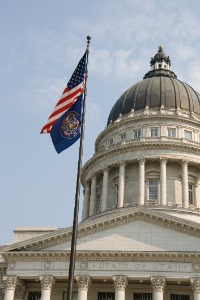The State of Utah’s Economy in 2023
 2/9/23 | Kinsey Love, Digital Marketing Manager
2/9/23 | Kinsey Love, Digital Marketing Manager
As a new year begins, Utah faces a period of significant economic uncertainty, according to research from Altabank’s Market Insights and the 2023 Economic Report to the Governor, which was prepared by Kem C. Gardner Policy Institute at the University of Utah.
Many traditional economic relationships have been permanently altered from the pandemic, with many industries still reeling from the effects of dramatic change. On top of that, the rapid rise of both inflation and interest rates have shifted the trajectory of the economy.
On the other hand, Utah has tremendous strengths that could buoy the state during an uncertain time. Unemployment is extremely low, supply chains show steady improvement, a rich supply of cash reserves at the state government level, and larger family savings account could be effective buffers against a possible recession.
As it stands now, it’s hard to say exactly where we’re at. A lot will hinge on the actions of key decision-makers around the state.
Economic Indicators in Utah
A few key factors paint an interesting picture of Utah’s economy in 2023. If employment is any indication of the local economy, few places in the country are doing as well as Utah. The state finished 2022 with an estimated unemployment rate of 2%, which is one of the lowest in the country and below the national estimated rate of 3.7%. Utahns also saw their wages increase considerably, rising from an average annual pay of $56,944 to $60,849.
However, many aspects of Utah life have gotten significantly more expensive, especially housing. With a score of 792, the Utah Home Price Index is more than double the national average of 386 (for reference, the Home Price Index in Q1 of 1991 was 100).
And while the state’s Gross Domestic Product or GDP climbed by more than $5 billion in 2022, it was a sharp decline in the percent change from the year before. Utah’s GPD increased by 6.8% in 2021 and just 2.3% in 2022.
The economic indicators in Utah are a real mixed bag.
Key Industries Driving the Utah Economy
Over the last three years, no industry in Utah has seen more growth than the construction business. From January 2020 to November 2022, construction saw a 21.2% employment change statewide. But as further data below shows, things might look very different for construction in 2023.
Tourism also was booming for some time after 2020. In 2021, Utah’s National Parks and ski resorts reported record numbers of visitors, although that figure has cooled off a bit since.
The information industry as well as that of trades, transportation, and utilities also saw double-digit employment growth in the post-Covid world. Energy, life sciences, and healthcare are also key industries to keep an eye on as Utah continues to move into a new normal.
Challenges Facing Utah’s Economy
Some of the industries that were red hot last year are cooling off, which could have a measurable impact on Utah’s economy. Perhaps the best example is that of the construction industry. While 2021 and 2022 were record-breaking years for builders, the momentum is expected to slow down in 2023. The most recent Economic Report to the Governor forecasts a 20.2% decrease in the value of permitted nonresidential construction, due to a challenging environment created by rising interest rates.
“Inflation, along with other challenging economic factors such as a tight labor market, could slow construction and send many potential projects back to the drawing board,” the report reads.
Not only are Utahns all collectively dealing with a frustrating rise in inflation, but the economic report also lists “rapidly rising interest rates” and “low consumer sentiment” as impediments to growth.
Government Policies & Initiatives Impacting Utah’s Economy
One of Utah’s biggest strengths - and possibly one of the best hedges against a financial recession – is the state’s strong financial reserves. With a reported surplus of $3.3 billion, lawmakers are currently discussing several big budget items in the state legislative session. After two years of record tax cuts, a historic tax cut is on the agenda for discussion in 2023.
A major point of emphasis for policymakers this year is the critically low water level in the Great Salt Lake. More than $500 million was put into water-related investments by the state last year, and more than a billion for infrastructure was earmarked as well.
Knowing that housing may be one of the state’s most critical and immediately-pressing issues, the Commission on Housing Affordability has been working to find ways to incentivize more affordable housing projects. Last year, lawmakers tabbed $70 million to be put towards housing and homelessness, which was a record at the time. However, it was well below the figure that many feel is needed.
It will be interesting to see what comes out of the 2023 Utah Legislative Session with so much uncertainty on the table.
Regardless of the economic forecasts and the decisions that have yet to be made, we can all take personal responsibility for our own financial future. Altabank is equipped to handle the banking needs for individuals and businesses, in any economic climate.
Author: Kinsey Love is the Digital Marketing Manager at Altabank. She specializes in content creation and strategy and enjoys all activities you can do in the mountains.
